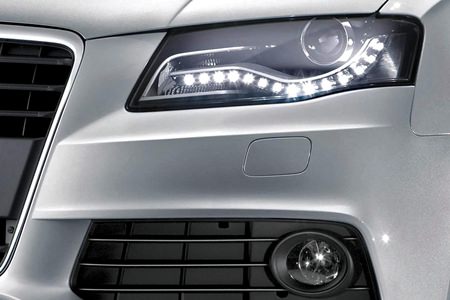Light-emitting diodes, LEDs, are revolutionizing the styling of automotive lighting.
The technology, once found only on luxury cars, is becoming standard on many headlamps and taillights of mainstream vehicles to set them apart from the competition. The increase in usage in mainstream motors comes as the price of LEDs declines and automakers are finding new ways to use them.
And with even more radical lighting making for advances to U.S. highways, such as headlight systems linked to radar and cameras eliminate the need to dim high beams for oncoming cars – and can even see pedestrians and direct light in that direction.

Most, if not all, of the new models showcased at the 2015 North American International Auto Show incorporated LED lighting. LED lights are smaller, the strips are bendable and they use less energy than traditional halogen bulbs. Two LEDs can be formed and fitted to project a smooth line for daytime running lights or in groups to illuminate large areas such as taillights.
The new 2015 Dodge Charger blends the LEDs into one seamless ribbon. Many high-end mainstream and luxury models use LEDs as decorations. Audi, BMW, Cadillac and others use groups of LEDs, also known as a matrix, to create jewel-like patterns that attract as much attention off as they do on.
On the all new 2015 Cadillac Escalade, 48 LEDs – 17 for each headlamp and seven for each lower front-end lamp – were used to enhance the desired jewel appearance and functionality.
One of the leading features on the horizon is what the industry refers to as active, or dynamic, driving beams that can increase or dim lighting under certain circumstances, so that drivers never have to worry about turning off their high beams.
The technology, integrating a camera and radar sensors, can detect an oncoming vehicle; it then blocks, moves or turns off one or more LEDs in a headlamp so as not to blind the oncoming driver but to continue illuminating the rest of the road.
However, the technology is ahead of the legislations and the new capabilities are not strictly legal.
The National Highway Traffic Safety Administration tested European-specification vehicles with dynamic lighting last year. Officials are reviewing data to decide whether the agency can establish appropriate requirements for the systems. NHTSA anticipates a decision sometime this year.
Analysts and industry experts expect LEDs to be the preferred lighting technology for the foreseeable future, phasing out high-intensity discharge lamps, known as HIDs, that often admit an intense blue beam.
Once thought to be an emerging trend, HIDs are not as customizable or fashionable as LEDs.




